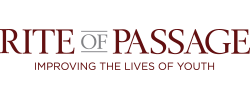Introduction
Human trafficking is a devastating crime that often does not receive enough attention, yet it impacts countless individuals, especially vulnerable youth. By definition, Human Trafficking is the unlawful act of transporting or coercing people in order to benefit from their work or service, typically in the form of forced labor or sexual exploitation. Unfortunately, many of the youth in our programs have experienced this.
As we continue to advocate for the safety and well-being of young people, it’s crucial to educate ourselves and our communities on how to identify the signs of human trafficking and take actionable steps to prevent it. To be an effective advocate, it’s important to understand the number of youth this impacts each day.
Here’s the Big Picture
More than 100,000 children are exploited annually in the U.S.
Every two minutes a child is trafficked to be sexually exploited in the United States.
The average age of exploitation is 12-15, with children as young as 3 months old
having been sold in the U.S.Anti-Trafficking International

Why are Youth Vulnerable to Human Trafficking?
Human trafficking involves the exploitation of individuals through force, fraud, or coercion for labor or sexual purposes.
Youth can be particularly vulnerable due to their lack of knowledge about this type of threat but additional factors such as homelessness, poverty, unstable family environments, or a history of abuse. These circumstances create more opportunities for perpetrators to target youth both online and in person.
Traffickers often target their victims through manipulation, false promises, or online exploitation.
Spotting the Signs of Human Trafficking in Youth
Identifying whether or not someone is being exploited can be challenging because traffickers often disguise their operations. However, recognizing the following signs can help:
Behavioral Indicators:
- Sudden changes in behavior, such as withdrawal, fearfulness, or signs of depression.
- Excessive anxiety about their safety or reluctance to discuss their whereabouts.
- Use of language or phrases that seem rehearsed or out of character.
Physical Indicators:
- Signs of physical abuse, such as bruises or burns.
- Inappropriate clothing for the weather, potentially to conceal injuries.
- Lack of proper hygiene or malnutrition.
Social Indicators:
- Association with older, controlling individuals who are not family members.
- Isolation from friends and family or sudden secrecy about relationships.
- Possession of expensive items like jewelry, phones, or clothing without a clear
explanation.
Online Indicators:
- Engaging in secretive online activity or interactions with strangers.
- Frequenting websites or apps commonly associated with exploitation.
- Posting content that suggests manipulation or coercion.
How to Prevent Human Trafficking Among Youth
Prevention starts with awareness and proactive measures:
- Education and awareness
- Teach young people about healthy relationships and the tactics traffickers use.
- Provide age-appropriate resources on internet safety and encourage open conversations about online interactions.
- Build Support Networks
- Foster strong, trusting relationships with youth, ensuring they feel safe to share concerns.
- Connect young people with mentors or community programs that promote
empowerment and resilience.
- Community Vigilance
- Train educators, healthcare providers, and community leaders to recognize signs of trafficking.
- Encourage community members to report suspicious activity to local authorities or
trafficking hotlines.
- Address Root Causes
- Support policies and programs that address poverty, homelessness, and access to education.
- Advocate for mental health resources and trauma-informed care for at-risk youth.
- Partner with Organizations
- Collaborate with anti-trafficking organizations to spread awareness and provide resources.
- Volunteer or donate to groups working to protect and rehabilitate trafficking survivors.
Take Action for a Brighter Future
Human trafficking is a violation of human rights that demands our attention and action. By staying informed, fostering strong community bonds, and advocating for vulnerable youth, we can protect young lives from exploitation. Together, we can create a world where every young person feels valued, safe, and empowered to thrive.
If you suspect a young person is being trafficked, it’s vital to act responsibly. Contact local authorities or the National Human Trafficking Hotline (1-888-373-7888) to report your concerns. Avoid directly confronting a suspected trafficker, as this can endanger both you and the victim.

